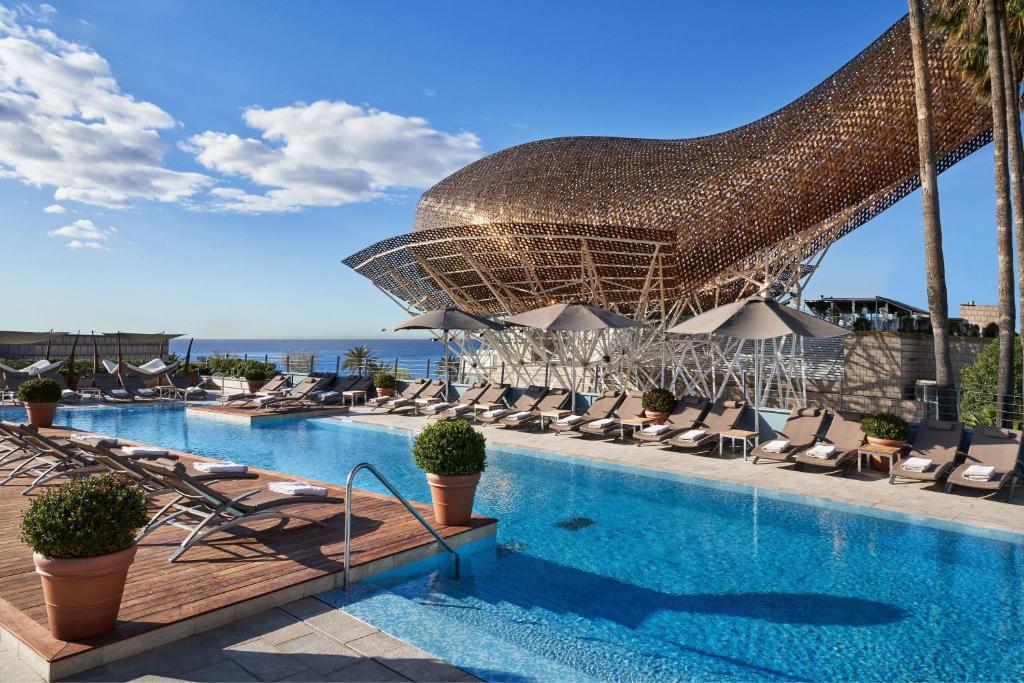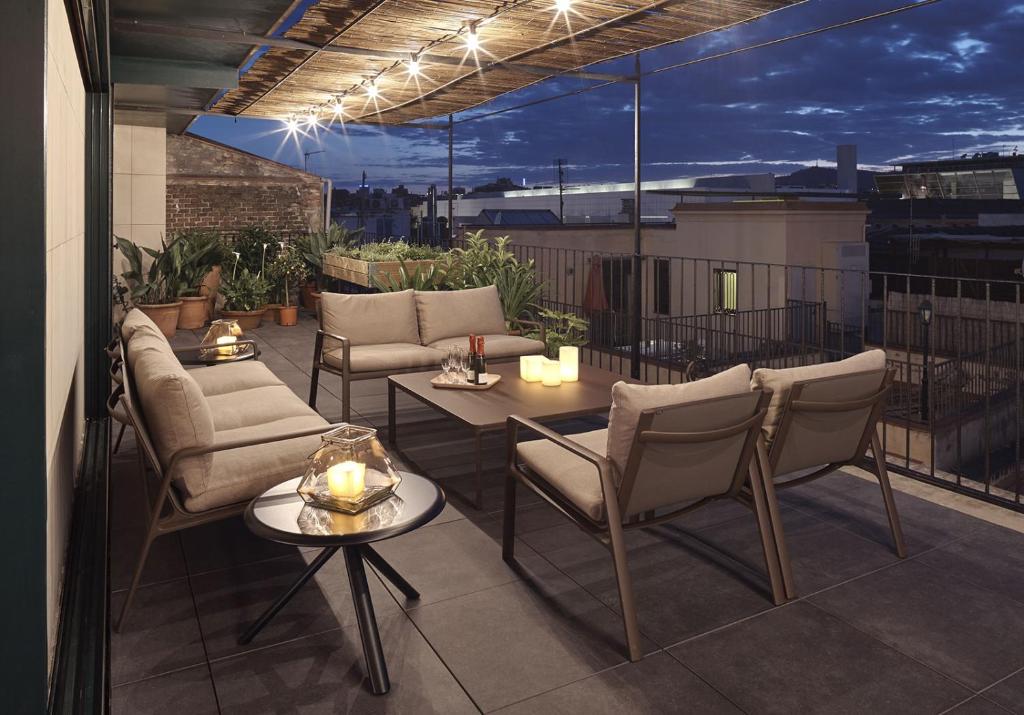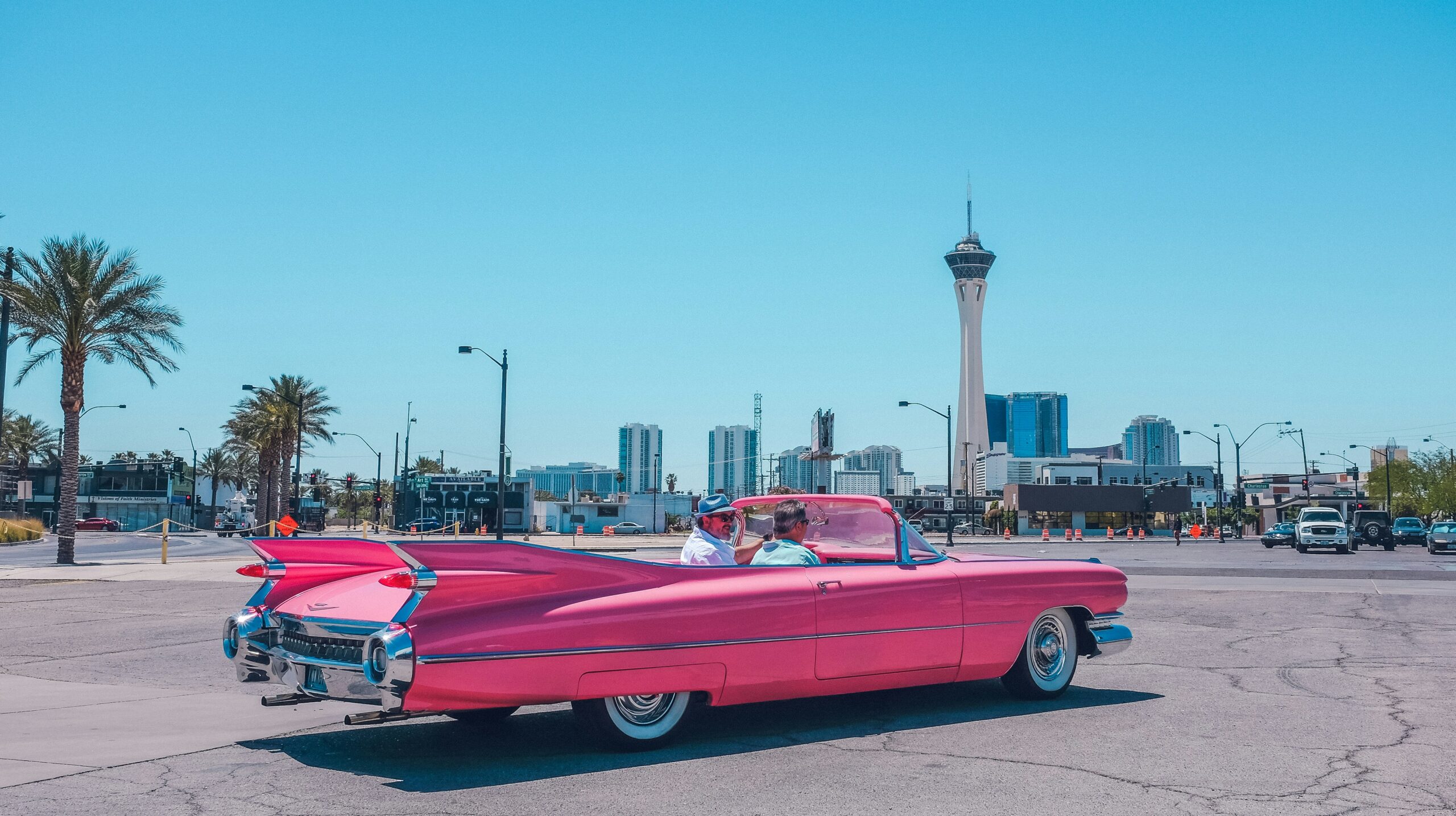Introduction
Hello, lovely adventurers! Are you dreaming of exploring the vibrant streets of Barcelona, where every corner whispers tales of art, history, and culture? Well, you’re in for a treat! Whether you’re a first-timer eager to discover the architectural wonders of Gaudí, a foodie ready to dive into the flavors of Catalonia, or a returning traveler seeking deeper explorations, Barcelona offers an enchanting blend of old-world charm and modern vibrancy.

In this guide, we’ll navigate through the must-visit spots, uncover hidden gems, and share practical tips to make your Barcelona itinerary as magical as the city itself. So pack your bags and let’s embark on this beautiful journey together – Barcelona is waiting to tell you its stories!
No time to read it all now? Pin it for later!


*Disclosure: This post contains a few affiliate links, which means I may receive a small commission, at no cost to you, if you make a purchase through my link.*
Last minute trip?
Don’t worry! I’ll give you a quick rundown on the best hotels and best tours for your Barcelona itinerary!
Best Hotels in Barcelona:
Luxury: Hotel Arts Barcelona: this luxurious hotel is known for its contemporary art collection, excellent service, and amenities like a spa, outdoor pool, and several high-end restaurants.
Mid-Range: Casa Camper Barcelona: It’s an excellent choice for travelers looking for style, comfort, and a central location. It’s a great choice for visitors who want a central, chic, and comfortable base.
Budget: Generator Barcelona: Generator Barcelona is more than just a place to stay; it’s a social experience. Ideal for budget-conscious travelers and backpackers, it offers vibrant, contemporary spaces for mingling and relaxation.
Best Tours in Barcelona:
Barcelona Aquarium: Visit the unique Barcelona Aquarium, entering without delay on a skip-the-line ticket. Experience the spectacular Oceanarium as you walk along a transparent tunnel surrounded by sharks. Learn about the seabed and the importance of water to the planet.
Flamenco Show: Watch a flamenco show at a historic venue in the heart of Barcelona, with optional dinner and drinks. Immerse yourself in the passionate song and dance at a theater with décor inspired by the Moors.
Overview of your Barcelona Itinerary
Day 1: Exploring the Heart of Barcelona
- La Rambla: Describe the vibrant atmosphere and what to look out for, like street performers and local markets.
- Gothic Quarter: Share the historical significance and suggest wandering through its narrow alleys to discover quaint shops and cafés.
- La Boqueria Market: Offer tips on what foods to try or where to get the best juice in the market.
Day 2: Gaudí and More
- Sagrada Familia: Provide insights into the architecture and recommend booking tickets in advance.
- Park Güell: Discuss the iconic features and viewpoints, advising on how to enjoy a leisurely stroll in the park.
- Casa Batlló: Mention the less-known facts about the building or your personal take on the audio guide.
Useful Resources Going Abroad
| Flights | WayAway |
| Car Rentals | Discover Cars |
| Insurance US & Canada | Travelex |
| Insurance World | World Nomads |
| Local Guides | Get Your Guide |
| Traveler eSims | Airalo |
Day 1 of your Barcelona Itinerary
If you’re planning your Barcelona itinerary, you simply cannot miss the vibrant and bustling La Rambla. Picture this: a tree-lined boulevard, buzzing with energy and bursting with the colors of street performers, flower stalls, and outdoor markets. It’s the perfect starting point to immerse yourself in the heart of Catalan culture and the eclectic spirit of Barcelona.
La Rambla: A Stroll
La Rambla is more than just a street; it’s a cultural canvas that stretches for about 1.2 kilometers from Plaça de Catalunya down to the Columbus Monument at the waterfront. As you wander down this lively avenue, you’ll encounter a mosaic of experiences that are quintessentially Barcelona.

First, let’s talk about the street performers. From flamenco dancers to living statues, each performer brings a unique flavor to the promenade, creating a lively atmosphere that captivates passersby. Take a moment to appreciate these artists; their performances are the pulse of La Rambla.

I’d also highly recommend checking out a Flamenco Show while you’re in Barcelona. This is the show we went to and we will go back there when we return to Barcelona!
Just off La Rambla, you’ll find the famous Mercat de Sant Josep de la Boqueria, commonly known as La Boqueria. This market is a feast for the senses, filled with everything from colorful candy stalls to aromatic spices, fresh seafood, and fruit smoothies that are out of this world.

My tip? Dive into the heart of the market where you can grab a seat at a bar and try some fresh tapas—think juicy olives, Iberian ham, and local cheeses, all perfect for a mid-stroll snack.
As you continue your journey, don’t forget to look up and around. The architecture here will transport you through centuries—notice the intricate details of the buildings lining the street. Venture into one of the side alleys, and you might discover a quaint café or a hidden bookshop, each with its own story.
La Rambla is also home to the Gran Teatre del Liceu, one of Europe’s leading opera houses. If you have time, peek inside or better yet, check if you can catch a performance. Just experiencing the opulence of its interior is worth it.

While La Rambla is a must-visit, it’s also bustling with tourists, which means you should keep an eye on your belongings. Pickpockets can be a concern, so carry your backpack in front and be mindful of your surroundings.
In closing this part of our Barcelona itinerary, La Rambla offers a wonderful introduction to the city’s dynamic culture and lively street life. It’s a place where every step tells a story, and every corner holds a new delight to be discovered.
Discovering the Gothic Quarter: A Step Back in Time
After the lively scenes of La Rambla, the next stop on our Barcelona itinerary is the Gothic Quarter, or Barri Gòtic, which is like stepping through a portal into medieval times. This historic core of the city, with its narrow, winding streets and serene squares, tells stories of ancient Barcelona through its Gothic architecture and remnants of Roman walls.
The Gothic Quarter is nestled between La Rambla and Via Laietana, and its labyrinthine layout is a treasure trove for explorers. Here, the shadows and light play on the cobblestone streets, creating an atmosphere that feels both mysterious and inviting. As you meander, you’ll find architectural wonders around every corner—from the imposing Barcelona Cathedral with its soaring spires to the quaint plazas that suddenly open up from seemingly nowhere.
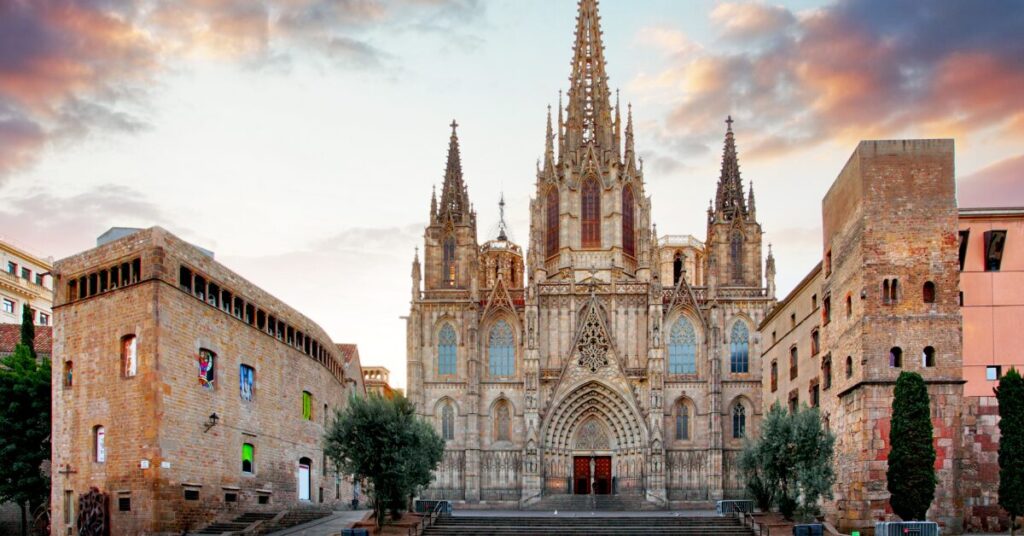
One of the most enchanting aspects of the Gothic Quarter is its ability to preserve its historical integrity while also hosting a vibrant modern life. The contrast between the ancient stone buildings and the lively contemporary bars and shops makes the Gothic Quarter a fascinating area to explore both day and night.
Be sure to visit the Plaça del Rei, a regal square that is often considered the historic heart of the city. This square is surrounded by Gothic buildings that were once part of the royal palace complex. It’s a perfect spot for photos, especially with the grand staircase and the King Martin’s Watchtower as your backdrop.
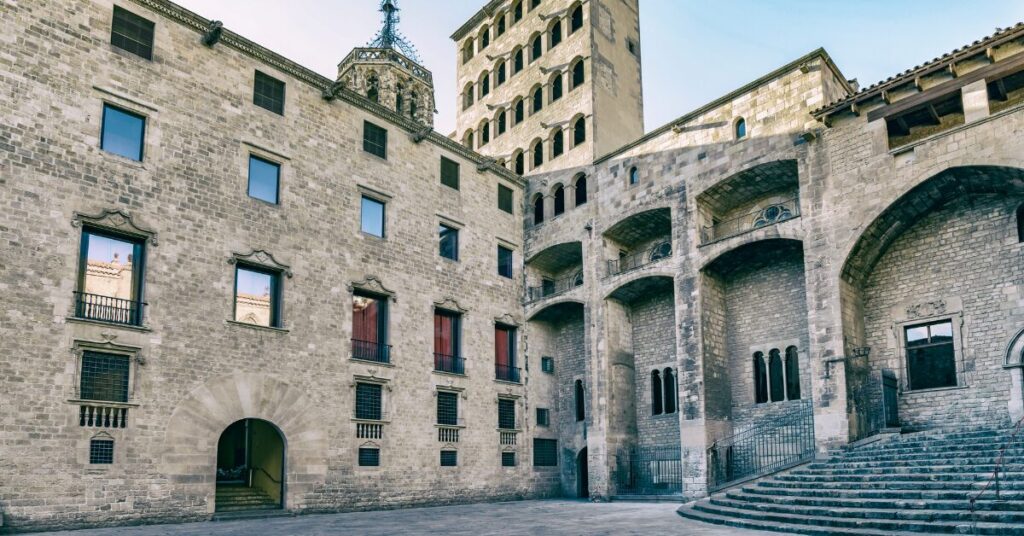
Another must-visit is the Barcelona Cathedral, officially known as the Cathedral of the Holy Cross and Saint Eulalia. The cathedral is a masterpiece of Gothic architecture and offers a serene escape from the bustling city. Inside, the magnificent choir stalls and the cloister—home to a charming garden and 13 white geese—are highlights not to be missed.
The Gothic Quarter is not just about historical buildings; it’s also a hub for art and culture. The Picasso Museum, housed in five adjoining medieval palaces, is right here. It holds one of the most extensive collections of artworks by the 20th-century Spanish artist Pablo Picasso. Even if you’re not a huge art enthusiast, the museum’s setting in these historic buildings makes it worth a visit.

Food lovers will rejoice in the Gothic Quarter as well. This area is brimming with tapas bars and Catalan restaurants tucked away in hidden alleys. For a truly local experience, try some of the tapas bars that offer a modern twist on traditional Catalan dishes. And as night falls, the Gothic Quarter transforms again, with its bars and pubs offering a lively nightlife scene that mixes the old with the new seamlessly.
As you explore, let the Gothic Quarter’s ambiance captivate you. The blend of shadows, light, history, and lively contemporary culture creates a unique experience that’s quintessentially Barcelona. Remember, the best way to enjoy the Gothic Quarter is to get a little lost, allowing its charm and mystery to reveal themselves naturally.
La Boqueria Market: A Culinary Carnival
Continuing our Barcelona itinerary, no visit to this vibrant city would be complete without a feast for the senses at La Boqueria Market. Officially known as Mercat de Sant Josep de la Boqueria, this bustling market is not just a place to buy food; it’s an experience that embodies the soul of Barcelona’s culinary scene.
Located just off La Rambla, La Boqueria is easily accessible and immediately immersive. As you step under the market’s iconic entrance sign, you’re greeted by an array of colors and aromas that instantly captivate your senses. From fresh fruits and vegetables displayed in meticulous piles to the catch of the day still gleaming under the market lights, each stall has its own story to tell.
The market dates back to the 1200s, initially starting as a traveling market for meat vendors. Over centuries, it has evolved into a permanent structure that serves as a hub for the freshest produce, seafood, meat, and a variety of other goods. The vibrancy and historical depth of La Boqueria make it more than just a market—it’s a living museum of food.

One of the best ways to experience La Boqueria is by indulging in the local fare. Many vendors offer “tapas” or small plates that allow you to sample a variety of dishes without filling up too quickly. Look for stalls with seats; they usually serve cooked meals right from their counters. Savor some “jamon Iberico,” a fine Spanish ham, or “pimientos de padrón,” small green peppers fried in olive oil and sprinkled with sea salt—simple yet delicious.
For something sweet, the fruit juices available throughout the market are a must-try. They come in a kaleidoscope of colors and flavors, from the familiar strawberry and banana to the more exotic dragon fruit and mango. These juices are not only refreshing but also provide a welcome energy boost as you wander through the market’s alleys.
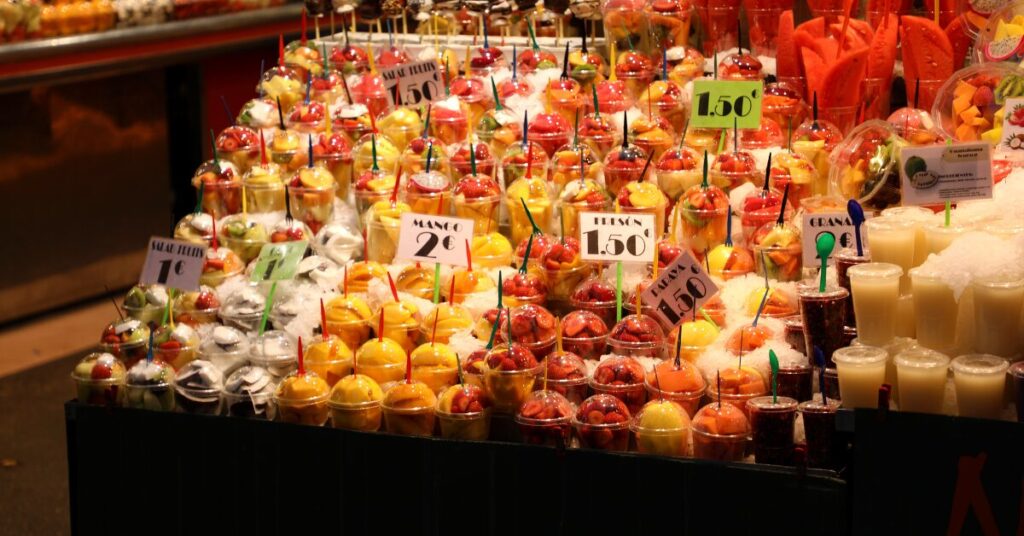
La Boqueria isn’t just a treat for the taste buds; it’s also a feast for the eyes, and indeed, the camera. Food photographers and Instagram enthusiasts will find no shortage of captivating visuals, from intricately arranged spices and colorful candies to the dramatic displays of seafood on ice. Every corner offers a new visual delight, making La Boqueria a hotspot for those looking to capture the essence of Barcelona’s market life.
While the market is a paradise for food lovers, it’s also a place where the local culture is palpable. You’ll hear Catalan and Spanish spoken in bursts, see locals bargaining for the best prices, or even catch up on gossip at one of the bars. It’s a social and cultural hub where the spirit of Barcelona is alive and thriving.
As you enjoy the wonders of La Boqueria, remember that this market is part of a broader ecosystem. Many vendors sell organic and locally sourced products, emphasizing the importance of sustainable practices in supporting local agriculture and fisheries. By choosing to buy from these vendors, you not only get to taste the freshest flavors but also contribute to the local economy and environmental conservation.
La Boqueria Market is truly a highlight of any Barcelona itinerary, offering an authentic slice of Catalan life that is both historical and deliciously vibrant. Whether you’re a foodie, a photographer, or simply someone who loves to explore, La Boqueria promises an unforgettable experience.
Day 2 of your Barcelona Itinerary
Sagrada Família – A Masterpiece in Progress
On the second day of our Barcelona itinerary, prepare to be mesmerized by one of the most iconic symbols of the city, the Sagrada Família. This architectural marvel, designed by the legendary Antoni Gaudí, is not just a church but a profound expression of faith and an artistic masterpiece that has been under construction since 1882.
As you approach Sagrada Família, its towering spires and intricate facades make an immediate impact. The church features a blend of Gothic and Art Nouveau forms, a testament to Gaudí’s innovative vision. Each of the facades tells a different biblical story, with the Nativity façade representing the birth of Jesus, the Passion façade depicting his suffering and death, and the Glory façade, which is still under construction, to celebrate his resurrection.

Stepping inside the Sagrada Família offers an entirely different experience. The interior is a forest of columns stretching towards the sky, branching out like trees to support an astonishingly complex vaulted ceiling. Light filters through stained glass windows, bathing the interior in ethereal, colorful light that shifts and dances over the course of the day. This play of light is designed to create an atmosphere of introspection and reverence.
Gaudí infused the Sagrada Família with deep symbolic meaning. Elements of nature, scripture, and geometry combine to create a unique spiritual sanctuary that speaks of Gaudí’s deep faith and his love for Catalonia’s natural landscape. A guided tour can help you appreciate the nuances of Gaudí’s designs, from the tortoise at the base of a column (symbolizing the earth) to the turtle (symbolizing the sea), each element is meticulously crafted to convey a celestial narrative.

To visit Sagrada Família, buying tickets in advance is essential as it’s one of the most visited monuments in Spain. Choose a ticket that includes access to one of the towers. The view from the top offers a breathtaking panorama of Barcelona and a closer look at the intricate architectural details that are invisible from the ground.
Morning is typically the best time to visit, as the sunlight illuminates the stained glass on the eastern side, creating a spectacle of light. Also, consider renting an audio guide or booking a guided tour to fully understand the extensive symbolism and innovative techniques Gaudí used.
As you leave Sagrada Família, take a moment to reflect on the impact of this monumental work. Still under construction, the church is a reminder of the relentless human spirit and our endless quest for beauty and understanding. Gaudí’s vision, which combines art, religion, and science, is a profound testament to his genius and a gift to the world.
The Sagrada Família is not just an attraction; it’s an experience that embodies the heart and soul of Barcelona. It’s a must-visit destination that leaves lasting impressions on all who walk through its doors.
Park Güell: Gaudí’s Garden of Wonders
Continuing with our Barcelona itinerary, after the awe-inspiring visit to the Sagrada Família, a trip to Park Güell presents the perfect contrast. This public park system composed of gardens and architectonic elements is another masterpiece by Antoni Gaudí, located on Carmel Hill in Barcelona. It’s not just a park; it’s a fantastical landscape that illustrates Gaudí’s creative genius and his deep appreciation for natural forms.
Upon entering Park Güell, you’re greeted by the famous dragon stairway, where a colorful ceramic dragon (or salamander) known as “El Drac” sits. This vibrant, mosaic-covered sculpture is one of the most iconic symbols of Gaudí’s work and a favorite among visitors for a photo opportunity. The park itself is a sprawling collection of lush gardens, winding paths, and whimsical structures that seem to spring from an enchanted storybook.

The main terrace, surrounded by a long bench in the form of a sea serpent, offers stunning views of the park and the city beyond. The bench is covered with tile shards, creating a kaleidoscope of colors and patterns that is both a visual delight and a testament to Gaudí’s innovative use of ceramic tiles in his work.
One of the most remarkable aspects of Park Güell is its use of organic shapes that mimic the natural world. The park’s structures include viaducts, grottoes, and colonnaded hallways that integrate seamlessly with the landscape. Gaudí’s design philosophy was centered on the belief that architectural forms should reflect the harmonies of nature. As you walk through Park Güell, notice how each element complements the natural shapes and forms of the surrounding landscape.

Originally intended as a residential estate for wealthy families, the site was transformed into a public park in the 1920s. Today, it stands as a UNESCO World Heritage Site, celebrated for its artistic, symbolic, and architectural significance. It’s a hub for cultural events and often hosts concerts and dance performances in its open areas.
To fully enjoy Park Güell, it’s recommended to purchase tickets in advance, especially if you wish to enter the Monumental Zone, which includes the main features of the park. Early morning or late afternoon times are ideal for visits, as the sunlight plays beautifully across the park’s many surfaces, enhancing the colors and shadows in a dramatic display.
Wear comfortable shoes, as the park’s paths can be steep and uneven, and be sure to bring water and sun protection on hot days. Take your time to explore not only the main sights but also the less traveled paths where you can appreciate the quieter, natural aspects of the park.
Casa Batlló: A Masterpiece of Color and Light
As we continue our journey through Barcelona’s architectural wonders in our Barcelona itinerary, a visit to Casa Batlló is essential. This stunning building, another of Antoni Gaudí’s creations, showcases his unbridled imagination and his ability to merge design with functionality in ways that transform ordinary spaces into works of art.

Casa Batlló’s façade is a visual feast, often interpreted as representing the legend of Saint George slaying the dragon. The roof is arched and resembles the back of a dragon with tiles that mimic scales, and a tower with a cross symbolizing the sword. The façade, covered in a mosaic made of broken ceramic tiles (trencadís), sparkles in the sunlight with vibrant colors that create a mesmerizing effect.
Inside Casa Batlló, the magic of Gaudí’s design continues with a hallway that feels like an underwater grotto, with walls that undulate and a light well covered in tiles that shift in color from darker at the top to lighter at the bottom, optimizing the natural light. The building’s interior is a testament to Gaudí’s attention to detail, from the organic shapes of the windows and doors to the furniture designed to fit the rooms.

Each room flows into the next, with sculpted wooden doors, stained glass windows, and sinuous walls that challenge traditional structural forms. The main suite, facing Passeig de Gràcia, features a balcony that offers a panoramic view of the bustling street below, while the back rooms overlook a quieter, internal courtyard.
The loft, once used as a service area, is characterized by its simplicity with white arches that create a striking contrast to the rest of the house’s ornate style. The roof terrace is another highlight, with its famous chimneys covered in trencadís and the “dragon’s spine” that provides stunning views of the city. This area underscores Gaudí’s genius in combining practical elements with aesthetic beauty.

When planning your visit, purchasing tickets in advance is highly recommended to avoid long lines. An audio guide is included with admission, providing a rich context to appreciate the subtle details and innovative design solutions employed by Gaudí. Night visits are also available, offering a different perspective of the house with atmospheric lighting and fewer crowds.
Casa Batlló is more than just a building; it’s a declaration of artistic and architectural freedom. Gaudí’s work here pushes the boundaries of design and functionality, creating a space that is both a home and a piece of art. The house not only reflects Gaudí’s unparalleled creativity but also his devotion to natural forms and his commitment to enhancing the beauty of everyday environments.
Exploring Casa Batlló gives visitors a deeper appreciation for Gaudí’s vision and the cultural richness of Barcelona. It’s an essential stop to include in any Barcelona itinerary for anyone interested in the blend of history, art, and architecture that defines this Catalan city.
Useful information for Your Barcelona Itinerary
Getting to Barcelona:
Barcelona is easily accessible from most international destinations via the Barcelona-El Prat Airport, which is located about 12 kilometers southwest of the city center. This airport services numerous international and domestic flights daily.
Upon arrival, you can reach the city center via the Aerobus service, local trains, or taxis. For those coming from within Europe, high-speed trains such as the AVE connect Barcelona with major cities like Madrid and Paris.
Getting Around Barcelona
Navigating Barcelona is straightforward thanks to its efficient public transport system. The city boasts an extensive network of buses, trams, and a metro system that connects all major attractions efficiently. The integrated ticket system allows for easy transfers between different modes of transport.
For a more scenic route, renting a bike or exploring on foot are excellent choices given the city’s compact layout and numerous pedestrian areas.
Best Time to Visit
The best time to visit Barcelona is during late spring (May and June) or early autumn (September and October). During these months, the weather is pleasant—warm but not oppressively hot, and the majority of tourist crowds have thinned out. The summer months are peak tourist season and can be quite crowded and hot.
Where to Stay in Barcelona
Choosing the right accommodation can enhance your stay in Barcelona. Here are three options catering to different budgets:
Luxury: Hotel Arts Barcelona
Overlooking the Mediterranean Sea and Port Olímpic, this luxurious hotel is known for its contemporary art collection, excellent service, and amenities like a spa, outdoor pool, and several high-end restaurants.
Choose Hotel Arts Barcelona for its unparalleled views of the Mediterranean and its commitment to luxury, from its finely appointed rooms to its world-class spa and dining options. It’s ideal for those looking to indulge in a high-end experience while enjoying close proximity to the city’s beaches and arts districts.
Mid-Range: Casa Camper Barcelona
Situated in the vibrant El Raval neighborhood, this trendy hotel offers a unique take on hospitality with comfortable, stylish rooms and perks like a 24-hour snack bar. It’s an excellent choice for travelers looking for style, comfort, and a central location. It’s a great choice for visitors who want a central, chic, and comfortable base.
Budget: Generator Barcelona
Generator Barcelona is more than just a place to stay; it’s a social experience. Ideal for budget-conscious travelers and backpackers, it offers vibrant, contemporary spaces for mingling and relaxation. Its location in the trendy district of Gràcia also makes it perfect for those looking to explore Barcelona’s local culture and nightlife.
Planning a trip to Spain?
Feel free to check out my blog post about where to stay in Mallorca. I can almost promise that you will find a hotel to your liking!
If Spain doesn’t quite fit you, maybe it’s neighbour Portugal will?
Thank you so much for reading this post!
Until next time!



